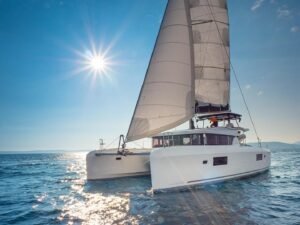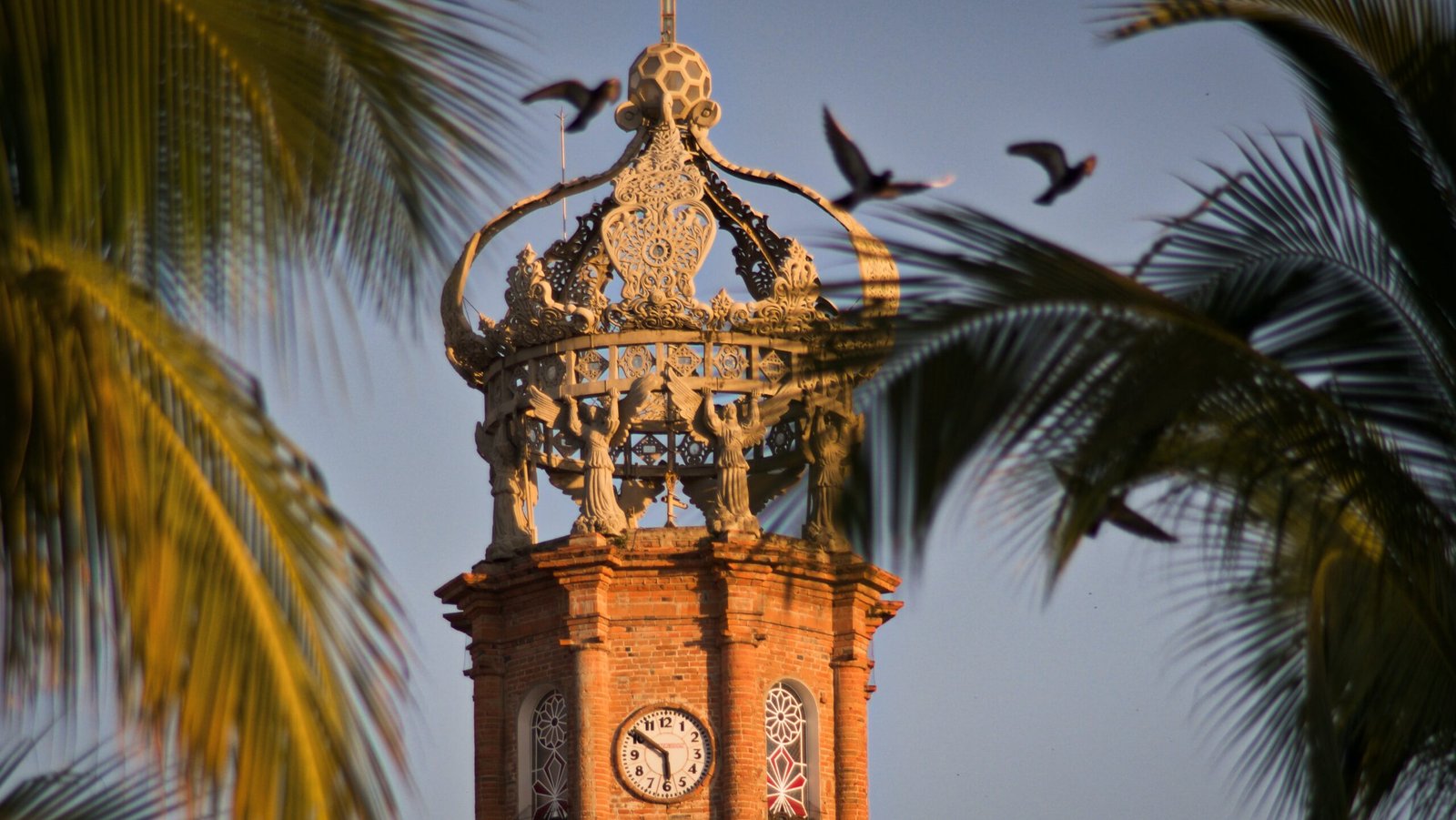From Humble Beginnings to Modern Tourism Hub
The early history and Indigenous Roots of Puerto Vallarta’s beginnings date back to when it was a small fishing and pearl-diving village known as “Las Peñas de Santa María de Guadalupe” in the early 19th century. However, long before the Spanish arrived in the 16th century, indigenous groups, including the Cuyuteco and Aztatlán peoples, lived in the region, thriving off the area’s rich natural resources and coastal access. These indigenous groups were skilled fishers, hunters, and traders, utilizing the surrounding ecosystems for food and commerce.
When the Spanish came in the 1500s, they named the area’s prominent bay “Bahía de Banderas” or Bay of Flags. The name comes from the legend of a fierce battle between the indigenous people and the Spanish conquistadors. The indigenous warriors held flags, or “banderas,” in battle, and the area was named to honor their fight. The bay itself played a vital role in regional trade and defense during the colonial era, both for indigenous groups and the Spanish.
In 1918, the small village was renamed Puerto Vallarta in honor of Ignacio Luis Vallarta, a prominent governor of Jalisco. The region’s economy remained largely dependent on fishing, farming, and exporting products like bananas and coconuts, while infrastructure and development lagged behind much of the country. Thus the name Puerto Vallarta means “port” (Puerto) and “Vallarta” in honor of the Jalisco governor.

Banderas Bay: Facts and Natural Wonders
Banderas Bay is one of the most important and remarkable features of Puerto Vallarta. Spanning approximately 62 miles (100 km) in circumference, it is the largest bay in Mexico and one of the deepest in the world, plunging to depths of over 3,000 feet (900 meters) in some areas. Its unique geography has made it an ideal spot for whale watching, dolphin sightings, and other aquatic wildlife, attracting visitors and marine biologists alike.
The bay is home to a diverse range of marine life, including humpback whales, which migrate to the warm waters during the winter months to mate and give birth. Visitors may also spot dolphins, sea turtles, manta rays, and a variety of fish species in the crystal-clear waters. Bottlenose dolphins are particularly common, often seen leaping alongside boats.
On land, Puerto Vallarta and the surrounding areas are part of the Sierra Madre Occidental mountain range, home to tropical forests and abundant wildlife. Iguanas, jaguars, ocelots, and a wide variety of bird species, such as macaws and hummingbirds, reside in the region. This rich biodiversity adds to the area’s allure for eco-tourism, particularly in more remote areas like Yelapa and Mismaloya.

Pirates and Shipwrecks: Puerto Vallarta’s Hidden History
Before tourists flocked to Puerto Vallarta, the bay was notorious for its use by pirates during the 16th and 17th centuries. The secluded coves and deep waters of Banderas Bay provided ideal hiding spots for pirate ships to ambush Spanish galleons transporting treasures from the New World back to Europe. The bay was frequently used as a base for pirate raids, where they would repair their vessels or lay low between attacks.
One of the most famous wrecks associated with Puerto Vallarta’s maritime history is the shipwreck near Tehuamixtle, a small fishing village south of Puerto Vallarta. The ship, likely from the colonial era, now rests on the seabed, and though the details surrounding its sinking remain murky, it is a reminder of the area’s tumultuous maritime past.

Conquest and Early Economy
When the Spanish conquistadors arrived in the 16th century, they set about claiming the coastal region, utilizing it for its natural resources and trade routes. They encountered indigenous resistance, particularly in the Banderas Bay region, which, according to legend, saw fierce battles as indigenous groups tried to defend their land from the invaders. Over time, however, Spanish colonial forces gained control of the land, establishing trade and using the bay as a strategic port.
For much of its early history, Puerto Vallarta remained a relatively quiet and isolated town, surrounded by the jungle and mountains. Its economy relied heavily on fishing, agriculture, and pearl diving. The Spanish introduced cattle ranching, and the region became known for producing coconuts, bananas, and coffee. Despite these modest industries, the area remained off the beaten path, as it was difficult to reach, and infrastructure was almost non-existent.
The Hollywood Influence: A Major Turning Point
Everything changed in the early 1960s when acclaimed director John Huston chose the nearby area of Mismaloya as the filming location for his movie “The Night of the Iguana“. Starring Hollywood icons Richard Burton and Ava Gardner, the production put Puerto Vallarta on the map. The media attention generated by the presence of Elizabeth Taylor, who visited Burton during filming, made international headlines, bringing the small town into the spotlight. Their famous romance and the glamorous Hollywood connections ignited curiosity and interest from travelers around the world.
The Mexican government quickly recognized Puerto Vallarta’s newfound fame and began investing in infrastructure to make the town more accessible. Roads, a modern airport, and marinas were developed to accommodate the influx of tourists, transforming it from a quiet fishing village into a global tourist destination.

Tourism Boom and Natural Beauty
By the 1970s, Puerto Vallarta had become a major tourist destination. The town’s growth as a tourist hub was further accelerated by its proximity to Banderas Bay, with its calm waters ideal for water sports, boating, and whale watching. The town’s stunning setting, between the Sierra Madre Mountains and the Pacific Ocean, created the perfect backdrop for both adventure and relaxation.
Unlike many other Mexican tourist cities, Puerto Vallarta retained its authentic Mexican culture and charm. Cobblestone streets, red-tiled roofs, and local traditions remain central to its appeal, even as luxury resorts and hotels were built. The city’s blend of high-end amenities with traditional architecture continues to attract travelers seeking both luxury and cultural experiences.

Today: A Balance of Luxury and Tradition
In the present day, Puerto Vallarta continues to strike a balance between modern tourism and traditional Mexican heritage. Visitors can explore luxury resorts, championship golf courses, and high-end yacht charters, while still strolling through local markets and enjoying authentic Mexican cuisine.
The Malecón, a long boardwalk along the waterfront, is one of the most iconic features of the city. It is a gathering spot for locals and tourists alike, featuring public art sculptures, street performers, and stunning ocean views. The town’s lively nightlife, burgeoning culinary scene, and annual cultural events, such as the Festival Gourmet and the Vallarta Pride Festival, make Puerto Vallarta one of Mexico’s most dynamic destinations.

Conclusion
From a pirate hideaway and small indigenous settlement to a glamorous Hollywood haunt and thriving tourist hub, Puerto Vallarta has experienced a rich and diverse history. Its unique combination of natural beauty, authentic Mexican culture, and modern luxury has cemented its place as one of Mexico’s most beloved and intriguing destinations. Whether you’re exploring the depths of Banderas Bay or wandering through the charming streets of Old Vallarta, the town offers a glimpse into both Mexico’s past and its vibrant present. The history is rich, and goes back centuries. Vallarta was truly a nearly inaccessible place until the early 20th century – and now it’s hard to imagine this with how much it’s grown into a powerhouse of international tourism.
We also made a short video about the history of Vallarta you can watch on YouTube.

For ALL things Puerto Vallarta. Download our eBook “100 Things to-do: Puerto Vallarta.”










